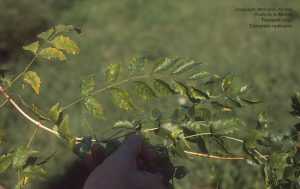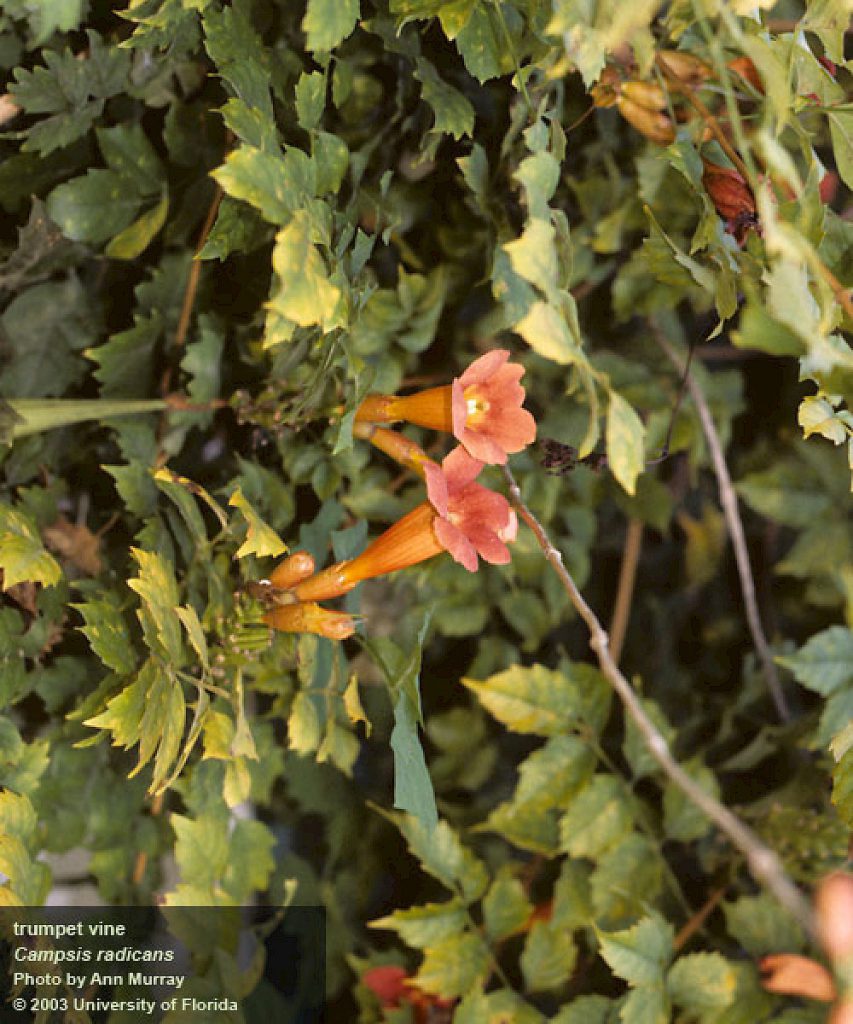In the Vines of Mistaken Identify, we’re exploring the different types of vines commonly called “invasive” around Nassau County. Rather, in fact, these vines are not invasive and many of them are native too, which provides amazing benefits to our ecosystem and environment. Our current blog explores Trumpet Vine (Campsis radicans).
It’s Important Value
There are many climbing vines, but the Trumpet Vine (Campsis radicans) takes the cake. It is a climber. A native climbing vine that provides beautiful orange blooms that attracts all sorts of pollinators, including hummingbirds. When given appropriate structure and support, the Trumpet Vine can create a beautiful amenity to any landscape or garden because of its big, bold colors.
Use in the Landscape
Trumpet Vine is native but is very difficult to get rid of once it establishes itself in the landscape. Being that it’s the champion of climbing vines, you can see this vine climb completely up the trunk of a tall pine. Due to this nature, many residents are concerned that it is killing/destroying trees throughout our community – this is not true. It’s a happy plant doing what it does best – grow, climb, and produce beautiful flowers for us and wildlife. It’s very important to not plant trumpet vines next to homes because they can easily grow into the siding and create damage to the structure. It is best to plant a trumpet vine in an intentional space and train it to climb an arbor, tree, or other garden structure. Additionally, planting within a hanging basket adds high interest.
Control Recommendation
Eradication and removal are easier for this vine than others, but usually, it can be pruned to help maintain its size. Mechanical removal is preferred and effective, but the cut-stump removal method with Glyphosate or Triclopyr is possible. Mechanical control could help prevent problematic trumpet vines from growing back. Regular scouting for younger trumpet vines emerging in the landscape will be critical to have control of its presence within our landscape.
Identification
Trumpet Vine can be identified within the landscape relatively easily because of its leaves and bright flowers. Its leaves are oddly pinnately compound and have a dentate leaf margin.
- Size/Form: The woody vines grow upwards into the canopies of trees, reaching heights of 60 – 100 feet long. Branches are multi-trunked or clumping stems.
- Leaf: The leaves are opposite/sub-opposite arranged with dentate leaf margins. The leaves provide an orange fall color but aren’t typically considered showy.
- Bark: Smooth on younger stems. Older stems have tight, exfoliating bark.
- Fruit: 3-6″ pod-like fruits that are a brown color and persist on the plant.
- Flower: Summer, showy flower with a yellowy/orange color. Flowers are shaped like a trumpet horn – lending to its name “Trumpet Vine.”

Each leaf can contain upwards of 12 leaflets (4 to 6 paired leaflets) and is odd-pinnately compound (odd meaning it has a single leaflet at the end of its compound leaf called a terminal leaflet). Photo Courtesy of A. Murray, UF/IFAS 
The Trumpet Vine produces beautiful, showy flowers for the landscape and attracts pollinators. Photo courtesy of Ann Murray, UF/IFAS
For More Information
Follow the Vines of Mistaken Identity Blog Series
Upcoming Horticulture Programs
Source: UF/IFAS Pest Alert
Note: All images and contents are the property of UF/IFAS.



